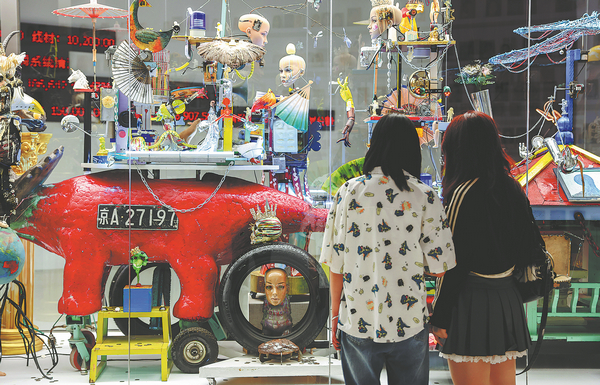
Exhibition Highlights New Generation of Artists
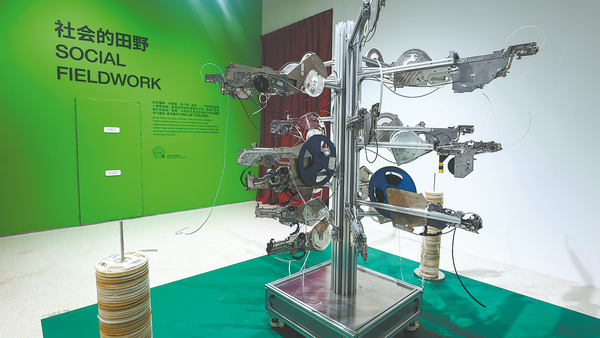
By getting answers, some surprising, to 90 questions, curator displays multifaceted perspectives in new project, Li Yingxue reports.
A mannequin head, feather duster, straw hat, toy goldfish, pigeon sculpture, coin and a motorcycle license plate … Hundreds of seemingly unrelated objects are intricately connected, moving in a mesmerizing, chaotic dance.
This 10-meter long, 3-meter-high installation titled The Squad Is Burning Out is the brainchild of young artist Tong Kunniao. The piece features a myriad of discarded consumables that he has meticulously collected from urban and rural settings, transforming forgotten debris into captivating art.
"They have been removed from progressive lives and a savage society. I envision their mixture and existence as another world; a consumer world brimming with immense energy," Tong remarks.
"This chaotic yet unified installation is intended to remind us that society is an expansive arena, a battleground where countless elements compete for attention and struggle for basic survival," explains the 34-year-old artist from Changsha, Hunan province.

Alongside this piece, 69 other works are on display, all created by Chinese artists under 35. The exhibition Era of Encore opened in June at the Beijing Times Art Museum, featuring diverse works by 32 artists born in the late 1980s and 1990s, offering their unique perspectives on contemporary society.
"This exhibition aims to expand our discussion around post-'90s artists. It explores the historical context from the late 1980s to the present, providing insights from four dimensions — art and cultural history, technological drivers and impacts, social scenes and issues, and aesthetic innovation and rebellion," explains Bao Dong, curator of the exhibition.
As the curatorial sector of this year's Beijing Dangdai Art Fair, Era of Encore is a collaborative effort between the Beijing Dangdai Art Fair and the Beijing Times Art Museum. The exhibition will run until Sept 1.
In China, artists born after the late 1980s have grown up in a brand-new world and naturally seek to explore different realms of artistic practice. Is their art a continuation or innovation, a conclusion or reboot, an encore or interlude, or a prelude to a new era?
The exhibition, divided into four sections — Farewell Modernism, Future Aboriginals, Social Fieldwork, and Recurring Dopamine — aims to answer these questions by showcasing the dynamic and multifaceted perspectives of young Chinese artists.
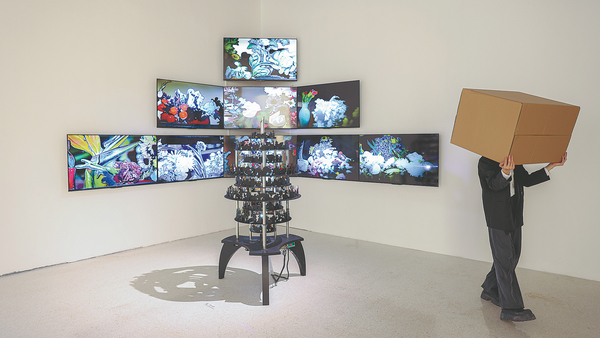
The pioneering survey
Bao explains that the past 35 years in China have been a time of rapid development amid global upheaval so this generation, shaped by these dynamics, holds distinct perspectives compared to previous ones.
He highlighted that while generational differences among artists are minor, individual differences are significant.
"Our exhibition for young artists aims to capture a slice of this era through their art and creations," Bao explains.
The exhibition originated from the "90X90X90: Survey of Chinese Young Artists" project launched by the Beijing Dangdai Art Fair last year. This initiative involved asking 90 questions to 90 artists born in the 1990s about their creative processes, lifestyles and values, aiming to depict and analyze their artistic identity and characteristics.
Bao, co-founder and artistic director of the Beijing Dangdai Art Fair, spent the past year traveling across China, visiting cities like Beijing, Shanghai, Chongqing, Chengdu in Sichuan province and Wuhan in Hubei province. He conducted in-person interviews with nearly 90 young artists meeting some in their studios, others in cafes, and some amid preparations for their upcoming exhibitions.
"The project is a sociological survey covering their age, geographic diversity, educational background, family background, views on marriage, relationships, children, and their perspectives on art," Bao explains.
After speaking with them, Bao initially thought most young artists were outgoing but found that many are quite introverted. "Many don't drink coffee, alcohol or smoke. They prefer a quiet, home-centered lifestyle, going to bed early," Bao notes.
"These young artists have diverse backgrounds. Some have extensive international experiences in education and life, while others have never left their hometown," Bao explains. "But overall, they share a strong desire for success."
Bao emphasized the significant impacts of social media on these young artists. "The internet provides them a quicker way to connect with audiences and they are skilled at using new media to showcase themselves and their work," he adds.
In the exhibition's Future Aboriginals section, Bao highlights how young artists perceive technology's impacts on daily life.
"As artists born after 1990, natives of the internet age, their sensitivity to information, familiarity with technology and innovative use of media give them a natural ability for artistic expression," Bao explains.
"This chapter focuses not on showcasing high-tech gadgets but exploring how technology influences society and how artists observe and translate this impact into their creative language," he elaborates.
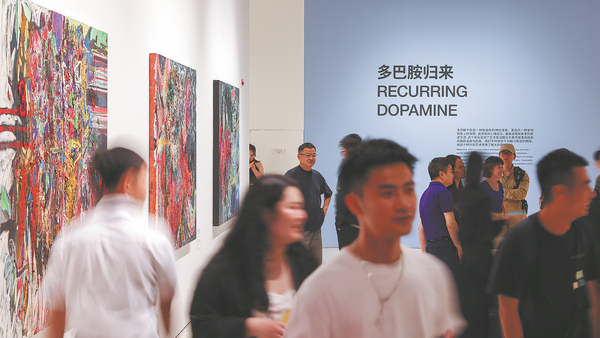
A slice of society
According to Liu Weiwei, executive director of the Times Art Museum and the exhibition's supervisor, this exhibition has been nearly a year in the making.
"Young artists serve as a slice of society, expressing their thoughts on the current era and social conditions through their work," Liu explains.
Liu believes that artists born after the 1990s are evolving, making it challenging to draw definitive conclusions. "Many artists feel our current era is marked by profound uncertainty, with significant events unfolding. Each person in this era experiences intense emotions and insights. Some artists use their work to express these feelings," Liu explains.
"By age 30 or 35, artists' thoughts mature, their creative expressions become more refined and their works more complete. This period represents a peak of productivity, enriched by life experiences, personal reflections and social observations. Our goal is to showcase the artistic achievements of this generation at this pivotal stage," Liu adds.
While older artists might conduct fieldwork in rural areas or lands, today's youth see their "field" as the internet, livestreaming platforms or online marketplaces like Taobao. This defines the content of the Social Fieldwork section, aimed at showcasing the experiential artworks of these artists.
Tong Kunniao's The Squad Is Burning Out is just a highlight of this chapter, created specifically for the exhibition.
"Tong ventured into creating his largest work yet. We collaborated closely with him during curation, designing a custom glass enclosure suited to the expansive exhibition space," Liu explains. "This presentation adds a ceremonial touch and impact, reminiscent of showcasing a massive dinosaur skeleton in a museum."
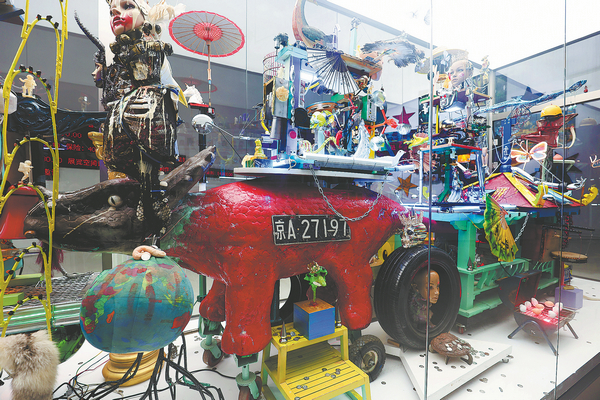
Liu highlights that the exhibition prominently features many elements, experiences and models unique to China. For example, Li Hanwei's installation New Communication vividly portrays China's rapid development through his exploration of the logistics of e-commerce.
Liu observes that many artists born after the 1990s have wide-ranging interests, some niche but deeply explored within dedicated communities such as gaming, AI applications, swing dancing and cycling.
As organizers, Liu shares their goal to attract diverse enthusiasts to the exhibition by fostering cross-disciplinary collaborations. They plan to invite musicians, scientists and comedians to participate in interactive sessions, aiming to turn these discussions into broader societal conversations.
"We hope to create a platform where young people eager for communication can gather based on shared interests and enjoyment in art," Liu concludes. "This exhibition seeks to resonate with society's pulse and emphasize an immersive experience. By attending in person, visitors can deeply connect with the messages and emotions conveyed by the artworks."
Contact the writer at liyingxue@chinadaily.com.cn
